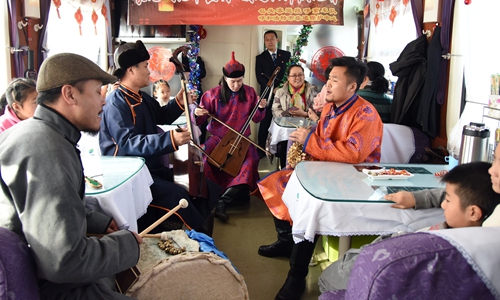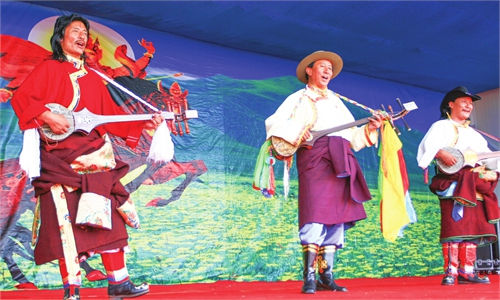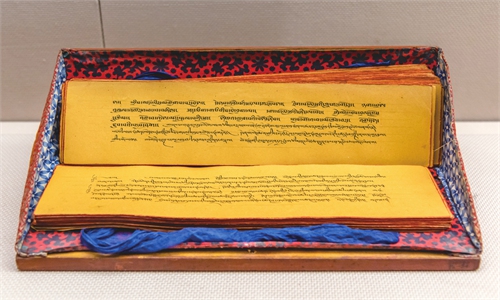ARTS / CULTURE & LEISURE
Cultural Heritage

Artists in Baotou, North China's Inner Mongolia Autonomous Region perform Khoomei with instruments such as the horse head fiddle, known as the matouqin in Chinese. Photo: IC
Khoomei: Soulful double-part throat singing art of the Mongolian ethnic groupKhoomei is a unique singing style and outstanding creation of the Mongolian ethnic group.
Meaning "throat" in Mongolian, Khoomei is a kind of double- or multiple-part singing art. Specifically, a singer can sing two or more notes at the same time using only his own vocal organs.
Khoomei originated from the Altai indigenous people during the 12th century, and spread throughout the vast region. As a product of the mountainous hunting culture of the time, in China, it is now mainly distributed in the Inner Mongolia Autonomous Region, while outside China it can be heard in Mongolia and Russia as well.
One of the oldest art forms of the Mongolian ethnic group, Khoomei retains many elements of the original singing style. It is a kind of ancient echo from the depths of many people's memories, which is closely related to the history and culture of ethnic Mongolians and is of great value for the study of its anthropology, ethnology and folklore. The art form conveys ethnic Mongolians' deep philosophical thinking and understanding of the natural universe and expresses their pursuit of harmonious survival and development and positive aesthetic taste.
Songs generally focus on odes to the following three subjects: the natural landscape, wildlife, and horses and grasslands. Representative songs of Khoomei include "Four Mountains," "Love of Anda [Brotherhood]" and "Wolf Totem."
Khoomei, inherited and spread by the contemporary Mongolian ethnic group, has not only caused a stir in the international music world, but also aroused great interest and universal attention from scholars in sociology, anthropology, history, culture and art as well as ethnomusicologists and vocal experts.
However, in Inner Mongolia, only the bass part of Khoomei has been preserved, while it is also on the verge of being lost in the Altai region of Xinjiang. Since the 1990s, aspiring artists in Inner Mongolia have learned various singing skills of Khoomei from masters from Mongolia who were invited to give lectures and perform the different vocal forms of Khoomei on stage.
Therefore, it is an urgent task to save and protect this special singing art from extinction. In November 2019, Khoomei was included as part of the first-batch of items inscribed to China's National Intangible Cultural Heritage List.
Global Times



